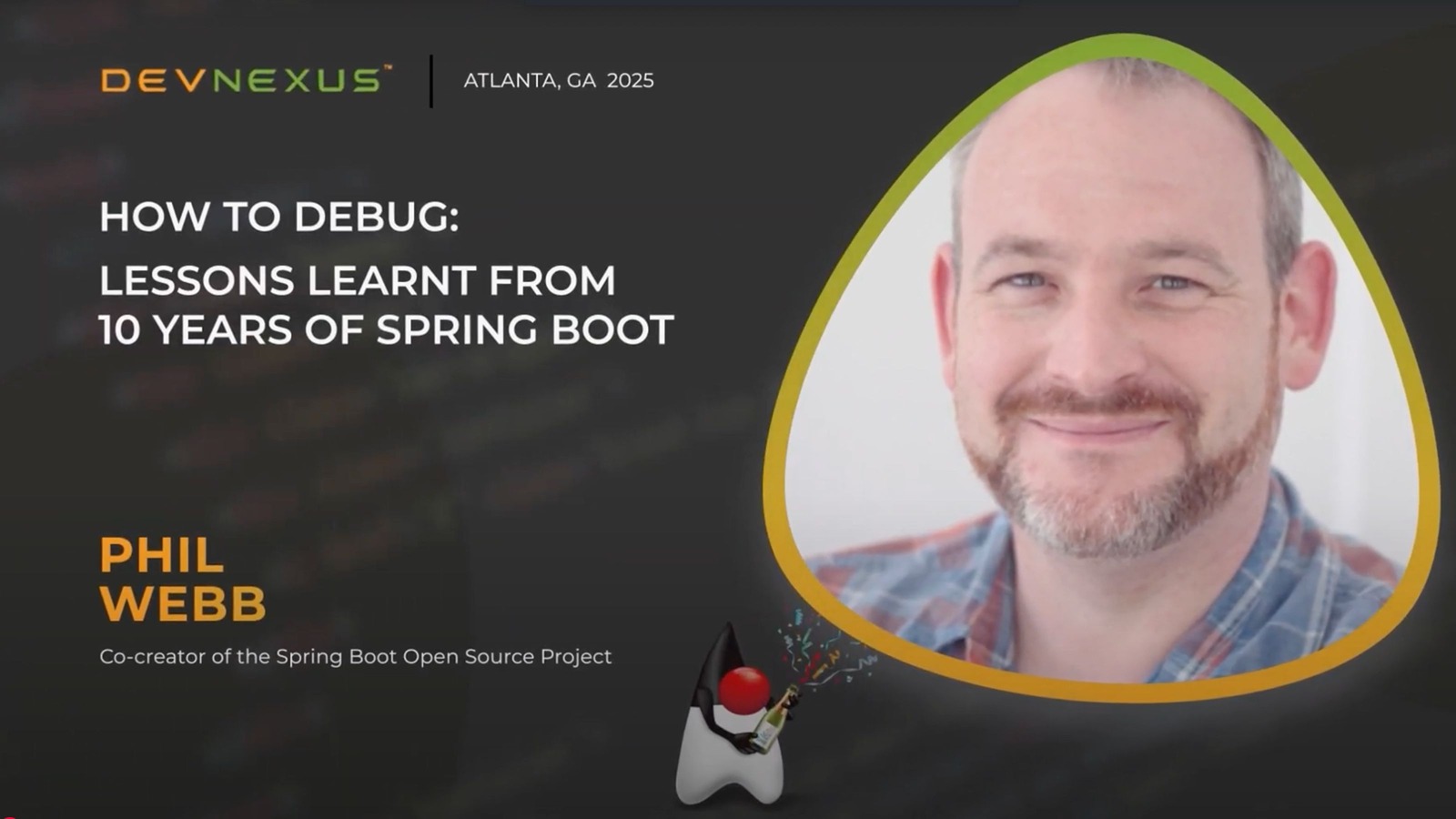How to Debug Lessons Learnt From 10 Years of SpringBoot with Phil Webb

Every developer knows the frustration of staring at a cryptic error message, and in his Devnexus talk, Phil Webb—a core developer on the Spring Boot project—offered practical wisdom on how to approach those moments. Drawing from his experience as both a prolific bug fixer and self-admitted bug maker, Webb redefined what counts as a bug, expanding it beyond crashes to include performance bottlenecks, memory leaks, and environment-specific failures. For him, debugging isn’t just about firing up a debugger—it’s “any technique that helps you remove a bug.” That mindset, he argues, is what empowers developers to tackle problems with creativity and confidence.
A central theme of the talk was the “Three R’s” of bug reporting, a framework that makes open-source collaboration more efficient. The first step is to Reproduce the bug with a minimal, self-contained example that isolates the problem, saving maintainers hours of guesswork. Next, developers should Report the issue thoroughly, including stack traces, version details, and logs to give clear context. Finally, Webb added a third “R” that is often overlooked: Repair. Even if a developer can’t provide a full patch, supplying a detailed and well-researched report lays the groundwork for a quicker, more targeted fix. This approach not only helps maintainers but also builds stronger community trust.
To bring these ideas to life, Webb shared real-world lessons from the Spring Boot issue tracker. He demonstrated how simple techniques—like using git blame or writing clear commit messages—can pay off when diagnosing issues later. He also walked through more complex debugging stories, from cross-platform file path problems to localization bugs that appeared only in certain regions. One particularly striking example involved diving into raw bytecode to uncover a subtle Kotlin constructor issue, showing that sometimes the root cause lies deeper than source code alone. Webb’s takeaway was clear: debugging is part technical skill, part persistence, and part curiosity.
The conclusion of his talk underscored that bug fixing is not just maintenance work—it’s an essential craft that improves projects and strengthens developer communities. By approaching debugging with patience, clarity, and collaboration, developers can turn frustrating errors into opportunities to build more reliable, resilient software.
Watch the Session
🎟️ Don’t miss out—watch the full session above, and join us at Devnexus 2026 for more hands-on talks, real-world lessons, and practical strategies that help developers sharpen their skills and shape the future of software.




